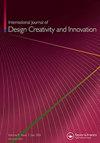Implementing design thinking to drive innovation in technical design
IF 2.5
Q4 ENGINEERING, MANUFACTURING
International Journal of Design Creativity and Innovation
Pub Date : 2022-03-14
DOI:10.1080/21650349.2022.2048698
引用次数: 3
Abstract
ABSTRACT Design Thinking has been gaining attention over the past decade with more and more companies seeking to use it as a human-centered problem-solving approach that can create novel solutions and foster (radical) innovation. Following several success stories from business, management or even civic service delivery environment, where Design Thinking has produced highly impactful and popularized innovation, technically oriented companies have increasingly shown interest in using it to nurture their innovation and creative capabilities. In this article, a qualitative analysis of semi-structured interviews with experts applying and researching Design Thinking are presented in the context of technology-focused organizations. Several concrete insights are derived to reveal specific success factors, central characteristics, tools and methods, but also limitations and prerequisites for its effective application in such contexts. Finally, the study highlights potential adaptations of the approach to support its integration with the processes similar organizations apply in their routine practices.运用设计思维推动技术设计创新
摘要设计思维在过去十年中受到了越来越多的关注,越来越多的公司寻求将其作为一种以人为中心的解决问题的方法,可以创造新的解决方案并促进(激进的)创新。在商业、管理甚至公民服务提供环境中的几个成功案例之后,设计思维产生了极具影响力和普及性的创新,技术导向型公司越来越有兴趣利用它来培养他们的创新和创造力。在这篇文章中,对应用和研究设计思维的专家进行了半结构化访谈,并在以技术为中心的组织中进行了定性分析。得出了一些具体的见解,以揭示具体的成功因素、核心特征、工具和方法,以及在这种情况下有效应用的局限性和先决条件。最后,该研究强调了该方法的潜在适应性,以支持其与类似组织在其日常实践中应用的流程相结合。
本文章由计算机程序翻译,如有差异,请以英文原文为准。
求助全文
约1分钟内获得全文
求助全文
来源期刊

International Journal of Design Creativity and Innovation
ENGINEERING, MANUFACTURING-
CiteScore
3.80
自引率
27.80%
发文量
15
期刊介绍:
The International Journal of Design Creativity and Innovation is an international publication that provides a forum for discussing the nature and potential of creativity and innovation in design from both theoretical and practical perspectives. Design creativity and innovation is truly an interdisciplinary academic research field that will interest and stimulate researchers of engineering design, industrial design, architecture, art, and similar areas. The journal aims to not only promote existing research disciplines but also pioneer a new one that lies in the intermediate area between the domains of systems engineering, information technology, computer science, social science, artificial intelligence, cognitive science, psychology, philosophy, linguistics, and related fields. The journal covers, but is not restricted to, the following topics: ·Theories on Design Creativity and Innovation ·Cognition of Design Creativity ·Innovative Process ·Inventive Process ·Analogical Reasoning for Design Creativity and Innovation ·Design Synthesis ·Method and Tools for Design Creativity and Innovation ·Representation of Design Creativity and Innovation ·Education for Design Creativity and Innovation ·Concept Generation and Inspiration.
 求助内容:
求助内容: 应助结果提醒方式:
应助结果提醒方式:


